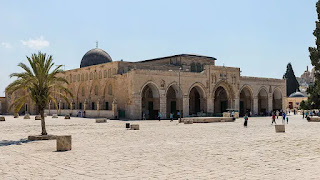Bunyan Marsoos:
 |
Introduction
The Qur’an is a timeless guidebook that addresses every aspect of human life—spiritual, moral, and social. It not only shapes individual character but also lays the foundation for a just and cohesive society. Among the many powerful metaphors used in the Qur’an, one stands out vividly for its call to unity and strength: “Bunyan Marsoos”, which translates to “a solidly cemented structure” or “a wall made of molten lead”.
This term appears in Surah As-Saff (61:4) where Allah says:
“Indeed, Allah loves those who fight in His cause in rows as though they are a single structure joined firmly.”
(Qur'an, 61:4)
This verse serves as a divine call to unity, discipline, and unwavering solidarity—qualities essential for any successful and thriving community.
Understanding the Term: What is Bunyan Marsoos?
Bunyan means structure or building, and Marsoos refers to something filled and reinforced with molten lead, making it impenetrable and firm. Together, the phrase denotes a structure so tight and unified that no crack or weakness remains.
Allah uses this metaphor to describe the ideal state of Muslim unity—where believers, like bricks cemented together with molten lead, form an unshakable wall against any internal or external threat. This unity is not just physical, but spiritual, ideological, and emotional.
Historical Context
This verse was revealed during a period when the Muslim Ummah was in its formative stage. Muslims in Madinah faced both internal challenges and external threats from the Quraysh and other hostile tribes. In such a tense environment, Allah emphasized the importance of discipline, order, and mutual support.
This divine principle of “Bunyan Marsoos” became the backbone of several key moments in Islamic history:
-
Battle of Badr: Though outnumbered, Muslims stood united and disciplined.
-
Battle of Uhud and Khandaq: Despite setbacks, the unity of the believers was crucial.
-
Righteous Caliphate: The era of Abu Bakr, Umar, Uthman, and Ali (RA) thrived when the Ummah acted as a unified whole.
These moments in history teach us that strength lies not merely in numbers or weapons, but in unity of purpose and unwavering alignment.
Contemporary Relevance
The metaphor of Bunyan Marsoos is not limited to ancient times. It is more relevant today than ever before.
1. A Cure for Division and Sectarianism
The modern Muslim world is plagued by divisions—ethnic, sectarian, political, and ideological. These rifts weaken us from within and make us vulnerable to external manipulation and exploitation.
If we return to the Qur’anic principle of Bunyan Marsoos, we can rise above these petty conflicts and unite around our shared faith, values, and goals.
2. Political Unity of the Muslim Ummah
Muslim-majority countries, if united like a single, fortified wall, would be a formidable force on the global stage. Yet, our disunity allows others to dictate terms to us in trade, politics, and even religious discourse.
True political independence and strength will only come when the leaders and nations of the Ummah embrace the vision of Bunyan Marsoos.
3. Unity in Social and Community Work
At the grassroots level, the principle calls for unity in mosques, neighborhoods, schools, and families. When we support each other, avoid backbiting, and work toward the common good, we mirror the solid wall described in the Qur’an.
For example:
-
Community service projects
-
Youth mentorship
-
Joint educational initiatives
These actions may seem small, but collectively they create a strong social fabric.
Applications in Daily Life
So, how can individuals apply the concept of Bunyan Marsoos in their own lives?
a) Start with the Heart
Unity begins within. A heart free from jealousy, pride, and hatred is more open to brotherhood and cooperation. Sincerity (ikhlas) in intention strengthens the collective.
b) Respect Differences
Unity doesn’t mean uniformity. Islam welcomes diversity in thought and culture—as long as the foundation remains strong in faith and shared values.
c) Promote Collective Goals
Whether in business, activism, or religious work—always prioritize collective benefit over individual gain.
“None of you truly believes until he loves for his brother what he loves for himself.”
(Prophet Muhammad ﷺ, Sahih Bukhari & Muslim)
Obstacles to Bunyan Marsoos
Achieving this level of unity is not without challenges. Among the major obstacles are:
-
Ego and pride: Personal egos can destroy team efforts.
-
Ignorance: Many are unaware of the Qur’anic emphasis on unity.
-
Manipulation: Enemies of Islam often exploit our internal differences.
Addressing these requires education, awareness, and sincere leadership at all levels.
The Role of Leaders
Prophet Muhammad ﷺ was the living example of Bunyan Marsoos. He brought together people of different backgrounds, tribes, and opinions—and transformed them into a united, disciplined force.
Today’s leaders—whether political, spiritual, or community-based—must follow this model. They must build consensus, eliminate bias, and lead with justice.
Conclusion
Bunyan Marsoos is more than just a metaphor—it is a mission. It is Allah’s command to His people to stand firm, united, and indestructible. In a world full of challenges—moral, spiritual, political—this Qur’anic vision offers the key to revival and success.
Let us not wait for miracles. Let us become that miracle—a people so united that they are like a wall filled with molten lead: immovable, indomitable, and unbreakable.


Comments